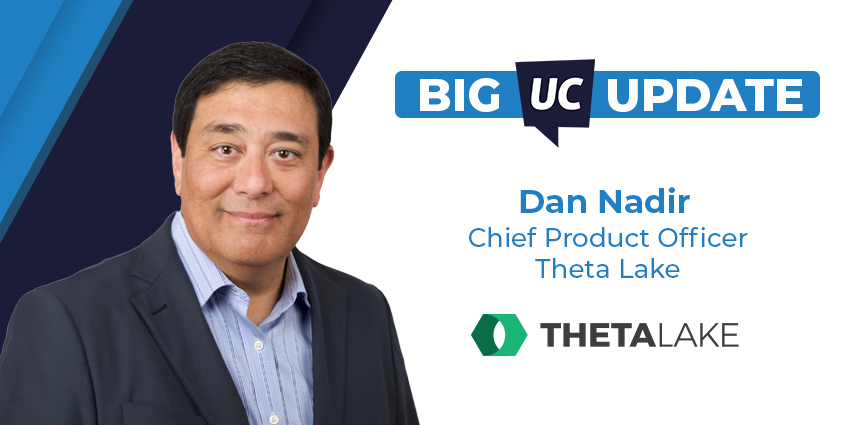Across the UC and collaboration space, AI is often pitched as the engine of business transformation; however, in boardrooms and at the top of IT leaders’ minds, enthusiasm is being tempered by anxiety. Across industries, technology leaders are discovering that the real obstacle is not how to accelerate AI adoption, but rather the risk and security challenges associated with governing it.
According to Techtelligence, which tracks enterprise technology buying signals across millions of verified data points, the fastest-growing area of buyer interest this quarter is AI risk, security, and compliance.
Intent data from Techtelligence (which measures what enterprises are actively researching and comparing online) shows that more than 30,000 large organisations are currently focused on topics like AI Security, AI Risk Management, and Responsible AI, making governance the number one spiking area of enterprise intent for November 2025.
This trend is being led by regulated sectors such as manufacturing (17 percent), finance (8 percent), and healthcare (8 percent), where accountability and data protection are critical. Nearly 70 percent of all signals come from businesses with over 1,000 employees, underscoring how compliance has become the defining priority for large-scale AI adoption.
In short, enterprise buyers are no longer asking what AI can do but how to control it.
For IT leaders and tech-buying committees, this shift represents a new frontier of risk management. The focus has moved from deployment velocity to defensibility, and from building AI systems that perform to ensuring they perform responsibly. As regulatory scrutiny tightens and the operational complexity of AI deepens, the question facing every organization is no longer whether to trust AI, but whether AI can be trusted within their governance framework.
Understanding AI Risk and Security
AI risk is far more than theoretical at this stage of its evolution. Businesses are discovering that models trained on sensitive or biased data can introduce far-reaching vulnerabilities, including ethical, technical, and reputational risks.
Data privacy and security remain the foremost concerns, particularly as generative models interact with corporate systems. Bias and fairness issues persist, often hidden deep within training data. Regulatory and compliance risks continue to multiply as laws struggle to catch up. Operational risks, ranging from unreliable automation to unexplainable model behavior, threaten to undermine business resilience.
Organizations are moving rapidly with AI, but the pace often outpaces risk governance. The results are already visible. Some global manufacturers have reportedly paused internal AI pilots after discovering that third-party plugins could expose sensitive product or customer data.
As adoption deepens, the emerging consensus is that risk management must evolve from a reactive to an anticipatory approach. The goal is not to slow progress but to ensure that speed does not come at the cost of control.
Governance & Oversight Strategies
If AI is to be trusted, it must be governed from within, not around the edges. Zahra Timsah, Co-founder and CEO of i-GENTIC AI, argued that “legacy compliance has been about policies and periodic reviews. The binder that sits on a shelf and gets updated manually, meaning slowly. That cadence fails when you throw in AI. The shift now is toward embedded governance: controls that exist inside the workflow, not around it.”
Timsah’s view is gaining traction across industries. Organizations are rethinking governance as a continuous process, one that is data-driven, policy-linked, and verifiable in real time. In this model, every automated decision must leave an auditable trail of evidence that can be traced to a governing rule or policy.
Ray Eitel-Porter, co-author of Governing the Machine, suggested the most pragmatic approach is to build on existing structures. “Evolving existing governance processes, where they exist, is our recommended approach for establishing AI governance. Many organizations have established data governance, privacy, and cybersecurity governance processes, and some, like banks, have model risk management processes. These approaches manage AI risks such as bias, hallucinations, and data leakage.”
Creating entirely new processes, he cautioned, risks duplication and internal fatigue.
Justin Sharrocks, General Manager for TrustedTech across EMEA, saw governance increasingly tied to human behavior. “Traditionally, governance was top-down—control and restrict. However, it is now shifting towards a more adaptive model. What we’ve missed until recently is understanding how people actually interact with AI.”
He emphasized that governance should empower responsible use, rather than suppress innovation, starting with education and continuous auditing, and then layering on technical controls such as model validation and access monitoring.
Dan Turchin, CEO of PeopleReign, added that oversight must also extend to the data itself:
“Organizations are restricting foundation LLMs like ChatGPT from accessing or training on corporate data. They’re establishing oversight teams comprised of IT, legal, and security that own responsibility for data chain of custody—the process of documenting data inflows and outflows and verifying data ownership as it is transferred.”
Across these perspectives, a pattern emerges that governance must be active, evidence-led, and woven into the fabric of operations.
AI Compliance & Regulatory Readiness
For many businesses, regulation is now the defining lens through which AI risk is viewed. The EU AI Act, due to take effect in 2026, is setting a global benchmark, alongside frameworks such as NIST’s AI Risk Management Framework and ISO/IEC 42001. Each brings detailed guidance, but also complexity.
Timsah advised designing for compliance from the ground up:
“Start by designing for auditability. Map each regulation or rule to a technical control or workflow step. Every automated decision should produce an evidence record that links to its governing policy. When evidence generation is part of system design, audit readiness becomes continuous rather than reactive.”
Eitel-Porter recommended “checkpoints”, formal points in approval processes where AI use must be declared and risk-triaged. High-risk applications can then undergo deeper assessment aligned to the EU AI Act’s definitions.
Turchin highlighted the importance of vendor accountability: “Partner with trusted vendors that commit to maintaining compliance with regulatory frameworks. Only trust vendors that enforce high AI guardrails with capabilities like automated PII redaction, workflow-level RBAC, audit reports, and automated topic blocklists.”
For Sharrocks, however, compliance starts closer to home. “Before aligning to a framework, you need to understand where you are and where you’re heading. Know your data. Secure your identities. Train your people. Integrate compliance early.” His point is striking: frameworks only work when the fundamentals are in place.
Balancing AI Innovation with Risk and Security Accountability
For every rule written, there is a fear that it will stifle innovation. Yet the most mature adopters are proving the opposite. By embedding governance into delivery pipelines, they are accelerating product cycles rather than slowing them.
“Compliance should not slow innovation if governance is built into delivery pipelines,” said Timsah. “When you can show regulators how every decision, escalation, and anomaly got logged and is reviewable, you will launch products faster, beat the competition to new markets, and lower operating costs.”
Eitel-Porter argued that early risk assessment is the key to sustaining momentum: “A key way to help maintain velocity is to embed AI governance questions into your development process and not tack it on to the end. If the risk assessments are conducted during development, then it should be a simple matter to pass any final test.”
For Turchin, culture matters as much as compliance: “Smart leaders throughout history have always known it’s essential to be on the right side of innovation. In the era of AI, that means creating a culture that celebrates asking questions and creating safe places where employees can share how and when they use AI.”
Sharrocks sees change management as the missing piece.
“Often, the biggest blocker to AI innovation isn’t technology, it’s fear. Fear of misuse, regulation, or wasted investment. Governance should empower responsible use, not restrict innovation.”
By piloting programmes, promoting internal champions, and communicating clearly, he argued, leaders can replace fear with confidence.
Emerging & Underestimated AI Risks
Even as organizations shore up defences, new risks are emerging beyond the horizon.
“Boards often focus on visible risks such as bias or privacy breaches,” warned Timsah. “The more complex threat is governance drift, when models, data pipelines, or autonomous agents evolve faster than their oversight mechanisms.” To counter this, she advised maintaining “living inventories” of all AI assets and their governing policies.
Eitel-Porter highlighted automation bias:
“As AI becomes increasingly accurate, the tendency for people to blindly rely on it and suspend their critical judgement increases. Leaders need to mandate frequent training and introduce ‘cognitive speedbumps’, process steps that force people to critically engage with AI outputs.”
Turchin added a philosophical warning: “AI only knows what we teach it. As more AI tools are used to generate more content and make more decisions, we must be more vigilant about reviewing their output. Assume that AI will make mistakes.”
Sharrocks points to adoption risk. “Organizations are spending millions, but usage is still around 40 percent. Change fatigue is another big one. Constant change leads to poor adoption and risky shortcuts.”
The common thread is that the greatest danger lies not in AI itself, but in how humans choose to govern, interpret, and trust it.
Key Takeaway About AI Risk Mitigation
AI has crossed the threshold from experiment to infrastructure, but enterprise readiness has not yet caught up. As the TechTelligence data makes clear, governance and compliance are now the sharp edge of competitive advantage.
The future of AI will belong not to those who move fastest, but to those who move wisely; who design governance as a living system, align innovation with accountability, and treat trust not as an afterthought but as an asset.
For IT, security, and C-suite leaders, that is the path to truly responsible AI, where it’s not a brake on progress, but its most powerful enabler.







